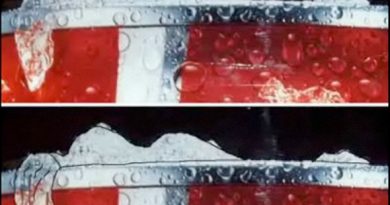‘Sonic Weapon Attacks’ mystery in Cuba deepens
The blaring, grinding noise jolted the American diplomat from his bed in a Havana hotel. He moved just a few feet, and there was silence. He climbed back into bed. Inexplicably, the agonizing sound hit him again. It was as if he’d walked through some invisible wall cutting straight through his room.
Soon came the hearing loss, and the speech problems, symptoms both similar and altogether different from others among at least 21 US victims in an astonishing international mystery still unfolding in Cuba. The top US diplomat has called them “health attacks”.
New details learned by the Associated Press indicate at least some of the incidents were confined to specific rooms or even parts of rooms with laser-like specificity, baffling US officials who say the facts and the physics don’t add up.
“None of this has a reasonable explanation,” said Fulton Armstrong, a former CIA official who served in Havana long before America re-opened an embassy there. “It’s just mystery after mystery after mystery.”
Suspicion initially focused on a sonic weapon, and on the Cubans. Yet the diagnosis of mild brain injury, considered unlikely to result from sound, has confounded the FBI, the state department and US intelligence agencies involved in the investigation.

Some victims now have problems concentrating or recalling specific words, several officials said, the latest signs of more serious damage than the US government initially realized. The United States first acknowledged the attacks in August – nine months after symptoms were first reported. The Trump administration still hasn’t identified a culprit or a device to explain the attacks, according to interviews with more than a dozen current and former US officials, Cuban officials and others briefed on the investigation. Most weren’t authorized to discuss the probe and demanded anonymity.
In fact, almost nothing about what went down in Havana is clear. Investigators have tested several theories about an intentional attack: by Cuba’s government, a rogue faction of its security forces, a third country like Russia or some combination thereof. Yet they’ve left open the possibility an advanced espionage operation went horribly awry, or that some other, less nefarious explanation is to blame.
Aside from their homes, officials said Americans were attacked in at least one hotel, a fact not previously disclosed. An incident occurred on an upper floor of the recently renovated Hotel Capri, a 60-year-old concrete tower steps from the Malecon, Havana’s iconic, waterside promenade.
The cases vary deeply: different symptoms, different recollections of what happened. In several episodes recounted by US officials, victims knew it was happening in real time, and there were strong indications of a sonic attack.
Some felt vibrations, and heard sounds – loud ringing or a high-pitch chirping similar to crickets or cicadas. Others heard the grinding noise. Some victims awoke with ringing in their ears and fumbled for their alarm clocks, only to discover the ringing stopped when they moved away from their beds. The attacks seemed to come at night. Several victims reported they came in minute-long bursts.
Yet others heard nothing, felt nothing. Later, their symptoms came. The scope keeps widening. On Tuesday, the state department disclosed that doctors had confirmed another two cases, bringing the total American victims to 21. Some have mild traumatic brain injury, known as a concussion, and others permanent hearing loss.
Even the potential motive is unclear. Investigators are at a loss to explain why Canadians were harmed, too, including some who reported nosebleeds. Fewer than 10 Canadian diplomatic households in Cuba were affected, a Canadian official said.
Unlike the US, Canada has maintained warm ties to Cuba for decades. Sound and health experts are equally baffled. Targeted, localized beams of sound are possible, but the laws of acoustics suggest such a device would probably be large and not easily concealed. Officials said it’s unclear whether the device’s effects were localized by design or due to some other technical factor.
And no single, sonic gadget seems to explain such an odd, inconsistent array of physical responses.
“Brain damage and concussions, it’s not possible,” said Joseph Pompei, a former MIT researcher and psychoacoustics expert. “Somebody would have to submerge their head into a pool lined with very powerful ultrasound transducers.”
Other symptoms have included brain swelling, dizziness, nausea, severe headaches, balance problems and tinnitus, or prolonged ringing in the ears. Many victims have shown improvement since leaving Cuba and some suffered only minor or temporary symptoms.
After the US complained to Cuba’s government earlier this year and Canada detected its own cases, the FBI and the Royal Canadian Mounted Police traveled to Havana to investigate.



